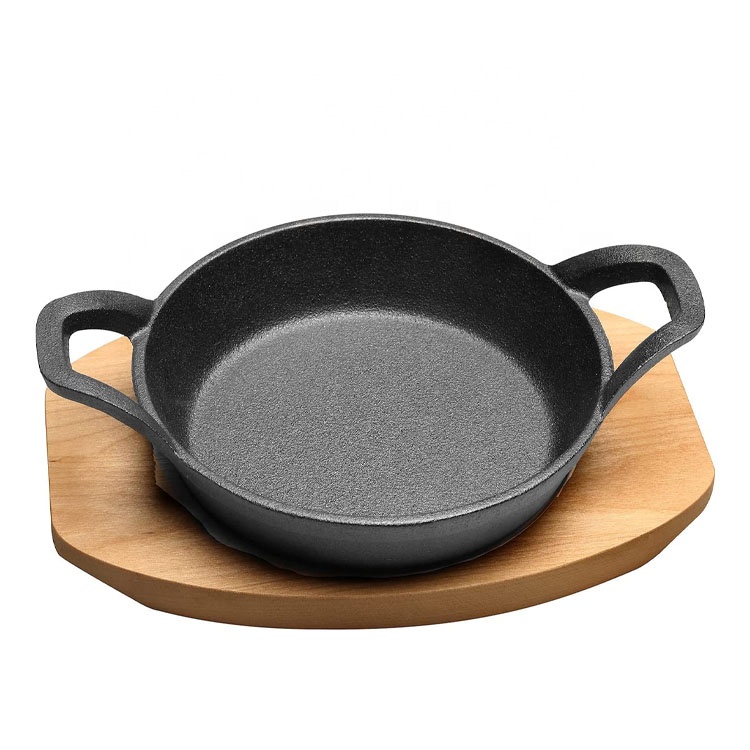
skillet price
The Rise and Fall of Skillet Prices A Culinary Economic Perspective
In the realm of culinary tools, skillets stand out as one of the most essential items in any kitchen. From frying eggs to searing meats, these versatile cookware pieces have been crucial in countless recipes. However, the price of skillets, like many other consumer goods, can fluctuate due to a variety of economic factors. Understanding the dynamics of skillet prices can illuminate the broader trends in both the kitchenware industry and the economy as a whole.
The primary materials used in skillet production include stainless steel, cast iron, aluminum, and non-stick coatings. Each of these materials comes with its own set of costs influenced by global markets. For instance, rising raw material prices, particularly in steel and aluminum, have a direct impact on skillet prices. When demand for these metals increases globally, manufacturers may be forced to pass on the costs to consumers in the form of higher prices. Thus, when the prices of these essential materials soar, so typically do the prices of the finished products.
Moreover, logistics and transportation costs significantly affect skillet prices. The COVID-19 pandemic highlighted vulnerabilities in global supply chains, leading to increased shipping costs and delays. Many manufacturers struggled to transport their products efficiently, which drove up prices further. These heightened costs, combined with the resurgence in home cooking during the pandemic, created a perfect storm for skillet prices. With more people cooking at home and purchasing kitchenware, the demand surged, leading to higher prices.
Another contributing factor is consumer preferences and trends. The growing popularity of cast iron skillets, touted for their durability and heat retention, has contributed to a niche market with varying price points. While a standard non-stick skillet might cost between $20 to $50, high-quality cast iron skillets can range from $50 to upwards of $200. The unique qualities of well-seasoned cast iron have created a loyal customer base that is willing to invest in higher-priced options, thereby inflating the average skillet price in the market.
skillet price

Additionally, the phenomenon of brand loyalty can drive prices higher. Renowned kitchenware brands often charge premium prices because consumers associate these brands with quality and reliability. As a result, even during economic downturns, certain brands can maintain their prices due to their established reputation. Conversely, newer or lesser-known brands often compete with lower price points to attract budget-conscious consumers, resulting in a broader spectrum of skillet prices in the market.
In the digital age, online shopping has transformed the way consumers acquire skillets. With a click, shoppers can compare prices across numerous retailers, potentially driving prices down for certain brands. However, online retail platforms often feature flash sales and promotional discounts, fluctuating prices based on market demand and seasonal trends. Holidays and events like Black Friday can see a decrease in skillet prices as retailers aim to boost sales, offering significant savings for consumers looking to upgrade their cooking gear.
Moreover, the rise in eco-conscious consumerism has led to an increase in demand for sustainable cookware options. Manufacturers are beginning to produce skillets from recycled materials or using eco-friendly methods, often at a premium price due to the production costs involved. This trend towards sustainability highlights another layer of complexity in the pricing of skillets, as eco-friendly products may appeal to a specific demographic willing to pay more for environmentally responsible goods.
Finally, as the economy shifts, so will consumer spending habits. A potential recession may lead to a decline in discretionary spending, causing skillet prices to drop as manufacturers adjust to reduced demand. Conversely, during economic booms, prices may rise as disposable income increases, allowing consumers to invest in higher-quality cookware.
In conclusion, skillet prices are influenced by a multitude of factors ranging from raw material costs to consumer preferences. Understanding these elements provides insight not only into the kitchenware market but also reflects broader economic conditions. Whether one is a seasoned chef or a novice cook, keeping an eye on skillet prices can be an excellent way to navigate the complexities of the culinary world while making informed purchasing decisions.
-
Season Cast Iron Perfectly with GPT-4 Turbo TipsNewsAug.01,2025
-
High Quality Cast Iron Cookware - Baixiang County Zhongda MachineryNewsAug.01,2025
-
Premium Cast Iron Pan: Durable & Perfect HeatNewsAug.01,2025
-
High Quality Kitchen Durable Black Round Cast Iron Cookware Pancake Crepe Pan-Baixiang County Zhongda Machinery Manufacturing Co., Ltd.NewsAug.01,2025
-
Cast Iron Cookware - Baixiang County Zhongda Machinery | Nonstick, Heat ResistanceNewsAug.01,2025
-
High Quality Kitchen Durable Black Round Cast Iron Cookware - Baixiang County Zhongda Machinery | Non-Stick, Heat Retention, DurableNewsJul.31,2025


